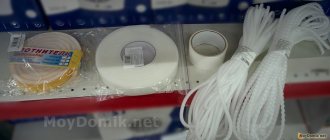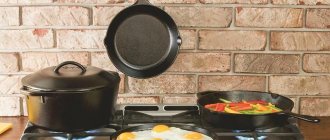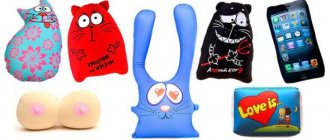Belt
– a stylish accessory without which it is impossible to imagine the wardrobe of a modern person. Both men and women probably have a lot of belts and sashes in their closets, of various shapes and colors. You need to know how to properly and conveniently store belts, how to place them more compactly in the closet, so that the accessories last a long time without losing their aesthetic and functional qualities. What methods exist? Let's look at it in this article.
In the closet
There are built-in crossbars for belts on the wardrobe doors and walls. You need to push one end through. The method is suitable for ties, thin scarves, and shawls. Disadvantage: limited space. Accessories touch, wrinkle, interfere with trousers and shirts on hangers. A large number of belts will not fit.
An alternative option is hangers, organizers, brackets, boxes. They are placed on shelves, hung in linen sections of closets and dressing rooms.
How do you store your belts?
On a roll Hanging
Belts are stored in organizers and boxes. Not all belts are suitable for twisting; creases appear. In this case, choose special hangers and cabinet brackets.
We choose the most rational way
It cannot be said that there is an ideal way to store accessories; everyone has their own shortcomings, and everyone has their own understanding of convenience. But it is still possible to identify the most rational storage methods.
Horizontal storage
When storing horizontally, it will be very convenient if each belt is stored in a separate compartment. This way, every accessory is visible and easy to access. Retractable sections are very convenient in this regard, durable and reliable, and do not take up much space.
Vertical storage
Vertical storage is becoming increasingly popular as it saves space. The most convenient way on retractable brackets. They take up minimal space, and suspended belts are clearly visible. In addition, this method is as harmless as possible for accessories.
How to organize your belts
To avoid confusion when storing belts, it is best to store each one separately, while simultaneously sorting all the belts by color, material and style. It's not difficult to do this. Of course, the first time it will take your time. But in the future, if you put everything back in its place, it will take a minimum of time. And in order for the belts to last longer, when stored in a twisted form, the buckles should be on the outside. And regular inspection and organization reduces the time it takes to get ready.
Storage in drawers and compartments
Belts can be stored in small boxes. They are in cabinets, chests of drawers, nightstands. Sometimes furniture makers specifically make compartments for small wardrobe items. They prevent tangling and help maintain order.
How to organize storage:
- Individually roll each belt around your hand.
- Remove from hand. Insert the free end into the hole. You will get something like a node.
- Place it in a box for storage.
The downside is that the method is not suitable for storing hard, thick belts. Silk and satin belts made of slippery material will not hold their shape. The solution is to install dividers, boxes, and containers in the compartments.
What affects shelf life
The preservation of the appearance and performance characteristics of belts depends on the following factors:
- Package . Not required for use, but protects against dust and other contaminants.
- Material . Synthetics are usually less demanding on storage conditions.
- Illumination . Many materials should not be left in sunlight.
- Humidity . The room must be dry. But, in an excessively dry place, the product may dry out and crack. Excessive humidity is fraught with damage by moths and fungus, which is especially true for natural materials.
- The state of the thing . Items must be cleaned before storing. Contaminants eat in and spoil the appearance and structure of the product.
On hooks or hangers
Furniture makers and home goods manufacturers have come up with ways to store belts and belts in a closet. They developed special hangers. The structures differ in shape, size, and fastening device.
Let's look at the main types:
With hooks. They are located on the crossbar. It is convenient to hang a large number of belts from the buckles. We do not recommend doing this behind the holes. They stretch and tear. Do not hang belts over the hooks. Folds and creases form.
Connected rings, squares, honeycombs. Designs with holes are used for belts, sashes, silk scarves, and scarves. Not suitable for hard materials. They bulge, interfere with other things, and it’s difficult to maintain order. Items should hang freely.
With clothespins . Storage option for belts and belts. Suitable for all types with or without buckles, or made from slippery materials. The exception is soft padded fabrics. Creases and marks from clothespins form;
You can make hangers with hooks and clothespins yourself. All parts are sold in hardware/construction stores.
Storing belts on hooks and in a box
Storage options
Let's look at the most popular solutions, their features and main pros and cons. There are many solutions, so read this section and then choose the option that best suits your situation.
Option 1: boxes and containers
The simplest solution with the following advantages:
| Illustration | Description |
| Simplicity . If you wish, you can make a box for the belts in half an hour; for this you will need a cardboard box, which is cut to the desired height, and dividers made of the same cardboard are placed inside. Naturally, you can purchase a ready-made solution made of plastic or wood, it will not cost too much. | |
| Mobility . Designs of this type can be easily removed from a shelf or drawer; if necessary, they can be quickly removed to restore order or rearrange the structure to another location. | |
| All contents are clearly visible . Now the belts will not get confused with each other, because they are located in separate compartments. When you take one of them, the others do not move and the drawer remains in perfect order. | |
| Any sizes . This is especially true for home-made options - you yourself select the optimal parameters and make the structure so that it is ideally located in the space allocated for it. Ready-made designs are usually made to fit standard cabinet compartments, so they are also suitable for almost any furniture. |
The disadvantages are:
- Belts need to be constantly rolled up . This takes time, so many people prefer other options.
- Belts may crack . This applies to products made from artificial materials; when stored rolled up for a long time, cracks form on the surface.
Option 2: drawers in the closet
This type of construction is in many ways similar to the option described above, but has its own characteristics:
- The box is made stationary . It is built into the closet initially and most often has the dimensions that you need. If you bought ready-made furniture, then there will be a standard design option.
This compartment will appeal to everyone who loves order.
- The design is reliable and durable . This is not a fragile cardboard box; the material used is wood or plywood.
- Versatility . The compartments can store belts, ties, and other small items. You decide what and how to place in the box.
The drawer can be used for different purposes
- You choose the dimensions and location of the compartment yourself . Most often this is done at the furniture design stage, so decide in advance where it is most convenient to store the belts.
The disadvantages of this solution are the same as those of the option described above, so it makes no sense to consider them again.
Option 3: hooks
Ordinary coat hooks are great for storing belts; there are a lot of options, let's look at some of them:
| Illustration | Description |
| Special hangers . There are modules on sale that are designed for belts and ties; they are small in size and installed in a place convenient for you: inside the closet, on its outer wall, or even somewhere in the room. | |
| Special plastic options . They are inexpensive, look attractive and last a long time, because the load on them is low. They are sold in furniture stores and can come in different sizes. | |
| Crossbar with hooks . An interesting solution consisting of a crossbar fixed to the wall of the furniture and individual hooks that can be hung in any quantity, everything is limited by the width of the structure and the number of belts that need to be stored. | |
Instead of hooks, you can use special fasteners. They securely secure the products with a latch.
| |
| You can make the design yourself . A little life hack: take a piece of board of suitable width and attach or glue wooden clothespins to it as shown in the photo. The result is a stylish and convenient accessory for storing belts, which can be secured in a closet or simply hung on a hook. |
The downside is that the appearance of the structure may not be the neatest, especially if there are many belts of different configurations hanging on it. But they do not bend and retain an attractive appearance much longer.
Option 4: hangers
In this case, a hanger bar is used to store the belts. The designs are available in a variety of configurations, let’s look at the most popular ones:
| Illustration | Description |
| Double-sided design on wooden hangers . A factory-made product in which hooks for belt buckles are fixed in a wooden plank; there can be from 5 to 7 of them on each side. A neat appearance and good capacity have made this option one of the most common. This solution is inexpensive, which is also important. | |
Metal hangers. A modern solution that has a simple design and large capacity. This option, as in the photo, accommodates many belts and can also be used for ties and other elements.
| |
| Compact models . In them, the hooks are attached in a circle to a wooden part, which serves as the basis of the entire assembly. This solution is good because it takes up very little space and, if necessary, can be put away in a desk drawer or on a shelf. There is also a minus - small capacity. | |
| The simplest solution is plastic or metal rings. They fit directly onto the barbell and have straps attached to them. This option is the cheapest of all, another plus is that you buy as many rings as there are belts to hang. The disadvantage is also obvious - with this arrangement, the belts take up a lot of space on the bar, which is undesirable if there is not enough space in the closet or there is a large number of things. | |
You can make your own belt hanger:
|
The downside is that belts take up space for things, which is not always justified in small closets.
Option 5: retractable brackets
A modern solution that is often built into a wardrobe. But, even if you already have a closet installed, you can easily add this convenient modern storage system to it. Let's look at its main features:
| Illustration | Description |
| The bracket is easy to install yourself. It consists of a guide, which is screwed to the cabinet wall with self-tapping screws, and a movable bar with hooks, on which the belts are hung. When choosing a model, the main thing to consider is the depth of the cabinet; the length of the bracket should be at least 10 mm less so that the structure fits normally and does not rest against the doors when closing them.
| |
| Models may vary . A simpler option is shown above, and the photo on the left shows a more attractive, but also more expensive solution. There is no particular difference, they differ in appearance and style of execution. Of course, more expensive models also have better quality fittings, so they will last longer. | |
| There are rotating models . They not only slide forward from the cabinet, but also rotate, as in the photo, which provides excellent access to all contents. Such options are rare and cost significantly more than standard systems. | |
| If there is little space, use a universal model. It is designed to store belts and trousers, which is very convenient. In addition, ties can also be stored on such systems. |
Option 6: pull-out sections
The most thorough solution, which is rare, but in terms of convenience and functionality beats any other option. Let's look at the main features:
| Illustration | Description |
| Belts are stored in a separate compartment . In the process of planning the cabinet, special narrow segments are provided in which a system with hooks is built in, on which belts are stored. The good thing about this option is that the contents are hidden from prying eyes and can be pulled out when necessary. There are no unnecessary elements in the storage compartment and perfect order is maintained. | |
| Compartments can have different sizes and designs . The outer part is designed like the rest of the facade. As for the internal filling, if the height of the retractable part is large, then it can be used for belts and ties. It can be either single-sided or double-sided, it all depends on how much storage space you need. | |
Retractable segments can be hidden behind the facade sash, or can be located outside. Often several such sections are made for different purposes; in addition to belts, you can store ties, jewelry and other necessary and useful little things in them.
|
This solution has certain disadvantages:
- Its implementation will cost much more than any other option . This is due to the fact that you need to make a special compartment and decorate the facade.
- It is problematic to build such a structure into a ready-made cabinet . It is best to think through this point at the design stage.
On brackets
Bracket - hanging holder. It is fixed on the wall or rod of the cabinet. It is a structure of crossbars and hooks. The rods are arranged horizontally, vertically, in the form of a sun with rays.
Pros of brackets:
- capacity;
- compactness;
- location options;
- cheapness;
- easy to find and get the right accessory.
Minuses:
- difficult to find on sale;
- you need to attach it to furniture, drill holes;
- does not stick to glue;
- many unsuccessful models.
There is a risk of damaging other wardrobe items with which belts and belts will be stored next to them. It is advisable to choose brackets with blunt hooks. We recommend checking the material of manufacture. Soft metal bends and sag over time. The holder must be supplied with screws and fastening means.
How to properly store ties?
Ties are an important part of any business person's wardrobe. Often accessories are specially selected to match different dresses and shirts, and are sometimes made from very expensive materials. Either way, I want every tie to look its best for as long as possible. Therefore, special attention should be paid to the issue of their preservation.
Many men hang their ties in the closet with the rest of their clothes. This archiving option is acceptable. For accessories you need to purchase special tools.
They should be hung separately, and not on the same hanger as a jacket or shirt. If you ignore this point, the products will quickly lose their shape. The fabric will wear out, dry out, and fold.
You shouldn't even put these wardrobe items in a drawer.
Please remember that you should not iron ties with an iron. To give the crumpled product the correct shape, use a special device.
To save yourself from everyday worries related to your wardrobe, it is best to store your items correctly. This way, you'll always have ties on hand, ready for the perfect look.
Let's consider options for placing such accessories.
A special hook is useful for those who have many different ties. This is a hook design. With the help of the latter, the product is fixed on a rod in the closet.
The object may take the form of a long vertical bar with holes for accessories, a wooden hanger with metal supports, a horizontal plastic frame, etc.
- There are many design options.
Some products are versatile and can also be used to store belts. Others are for ties only. In this case, the neck fittings can be placed on the product in one, two rows or in a circle (depending on the design features). The choice depends on personal taste.
A luxurious box made of precious wood will be an excellent storage for expensive accessories. Such products are divided into several identical compartments. Of course, there is a soft lining inside to prevent damage to the fabric.
Each tie is rolled up and stored in a separate compartment. To do this, take the product and place its narrow part between the index and middle fingers. So you have to make a circle around two fingers. It turns out a clean roll.
This storage method is especially preferable for wool products (they lose their shape when hung). The box lid can be transparent or solid. There are one- and two-story buildings for sale. There are boxes in which one “top” is for ties, and the other for small accessories (watches, cufflinks, rings, etc.).
Such boxes not only protect wardrobe items from dust and dirt, but also look solid and are pleasing to the owner’s eye. In addition, such products are compact and mobile - they can be placed anywhere in the dressing room or closet.
A similar organizer with tie compartments that roll up is also available in other materials. Budget options include plastic and fabric models. They can also be placed anywhere. If necessary, you can buy several identical products and stack them on top of each other.
Plastic boxes are more stable. They can be washed periodically (if necessary) and cleaned of dust. In addition, they keep their shape better.
Options made from thick fabric and cardboard come out faster.
If you often travel for work or just travel, you cannot do without a special travel case for ties. Modern manufacturers offer options designed for one accessory and models designed for 2 products.
The former usually take the form of a compact round or rectangular case into which the tie is folded. The latter are more like a school pencil case. When open, they provide a surface onto which accessories are secured using narrow straps with buttons.
The product is then closed (like a book) and zipped.
Therefore, there are various devices that help keep ties in perfect condition. When choosing the right option, you should consider the purpose of the purchase (storage at home or on the go), location (on a bar counter, in a drawer, on a shelf), as well as financial capabilities (both are expensive and budget organizer templates for sale).
The following video shows the basic ways to store ties.
In boxes
Boxes are easy to use for storing belts. Containers will do. They are installed in drawers, on free shelves.
Storage instructions:
- Roll the belts. Secure with an elastic band. Or wrap the free edge of the accessory.
- Place the rolls vertically in rows in a box.
- Place on a shelf for storage.
The downside is that it’s difficult to get one item. The other straps need to be moved apart. Belts often fall out, creating a mess. The solution is to make partitions from thick cardboard or fiberboard.
There are ready-made plastic dividers on sale. They often have a prefabricated structure. This makes it possible to select the quantity and size of storage cells.
Things according to the season
Items that are not suitable for the season are recommended to be removed immediately. You can use a separate compartment for this if the size of the dressing room allows. You can also use mezzanines and chests of drawers. Chunky jackets can be stored away in storage compartments in sofas and beds.
Related links: Kitchen trailer - how to properly decorate the interior
How to make a bag hanger
If you keep your bags on the closet floor and are throwing everything out of it in search of the right bag, then here is a great idea for a bag hanger that you can hang in your closet.
- You will need a wire hanger:
- Fold the two edges as shown in the picture:
- You can see that the hook is pointing sideways. Now it needs to be turned in the opposite direction from the bends. It will look something like this:
- Paint the hanger your favorite color.
As a result, the bag will hang in the closet like this:
The main thing is that the bag is empty, otherwise the wire will not hold up and will straighten out, and the bag will fall.
( 2 ratings, average 5 out of 5 )
Special organizer or tall shoe box
To keep a pair of shoes in perfect condition, it is enough to leave them in the store box when they are not in use. You can sign this packaging or stick a photo of the boots on it. But this won’t save space. Therefore, manufacturers of household goods offer an alternative option - hanging shoe organizers.
Transparent plastic containers allow you to sort shoes by season, style, and color. And most importantly, everything is visible in them. We place the boxes themselves at the bottom of the cabinet. We put the shoes we wear least often down. Organizers safely store not only sneakers or shoes, but also knitwear: rolled long sleeves and T-shirts.
Rice. 12 – Storing shoes in boxes











